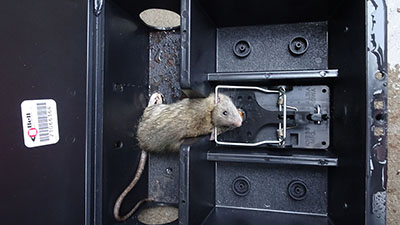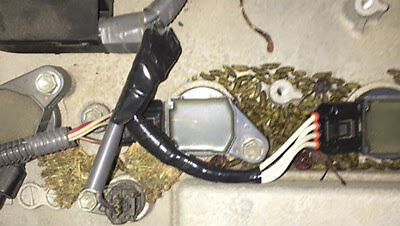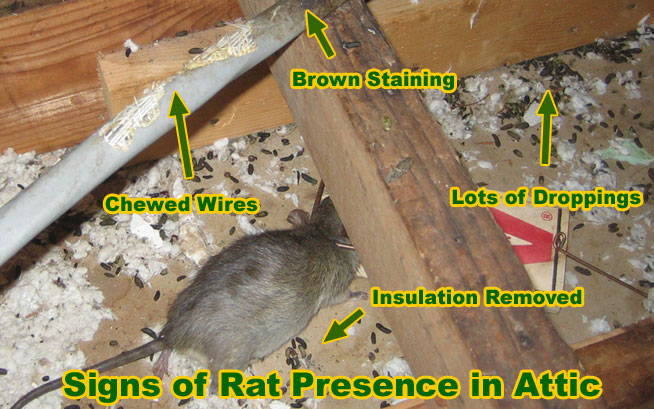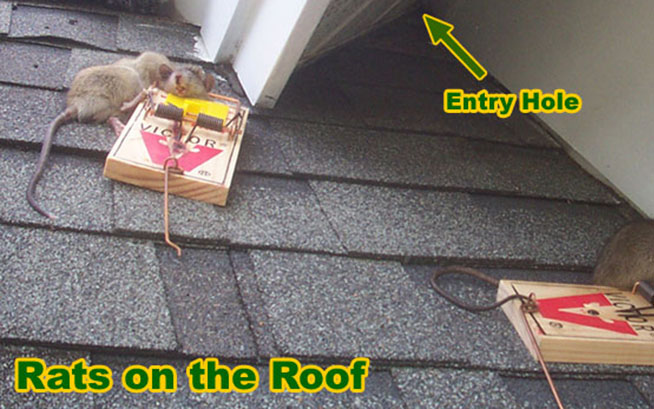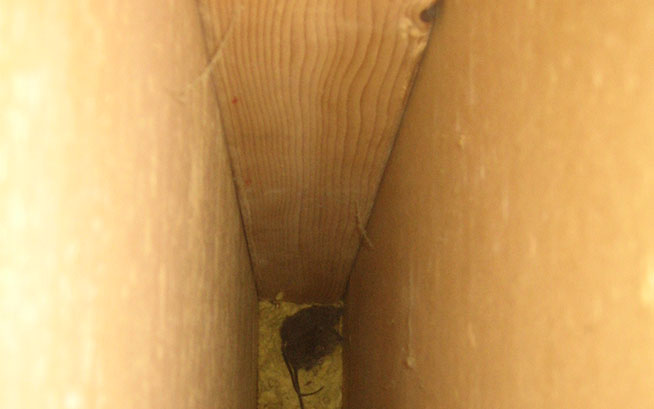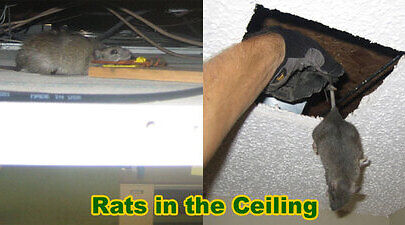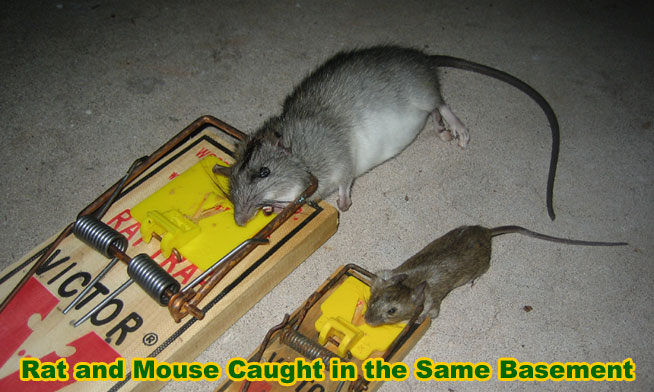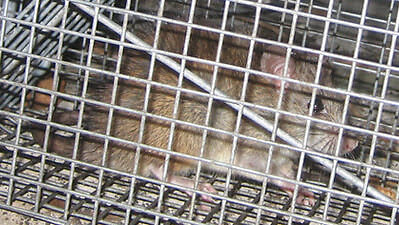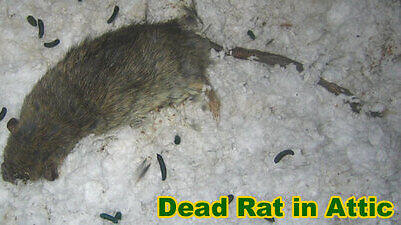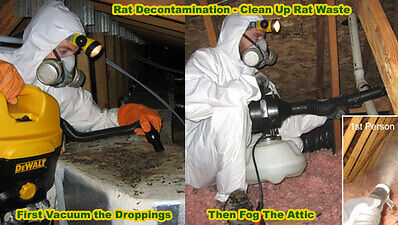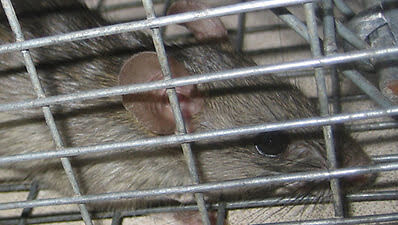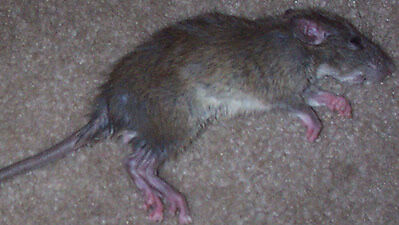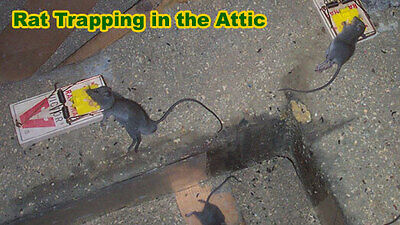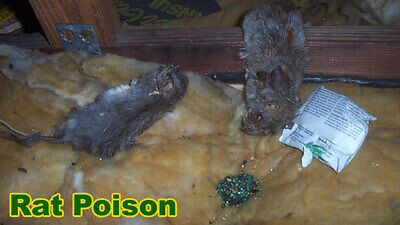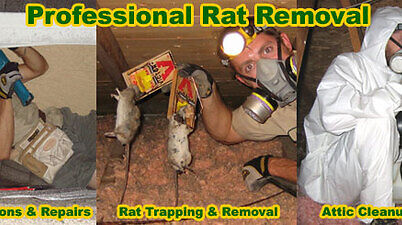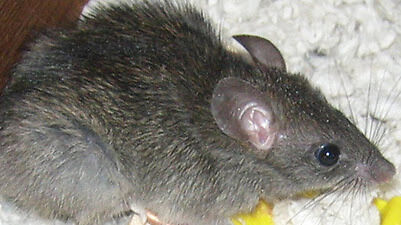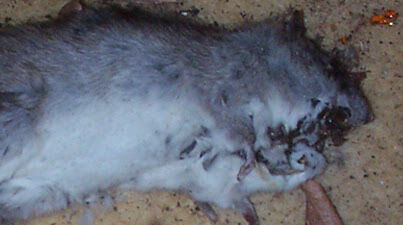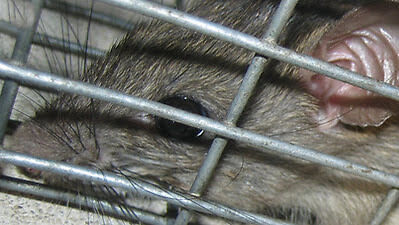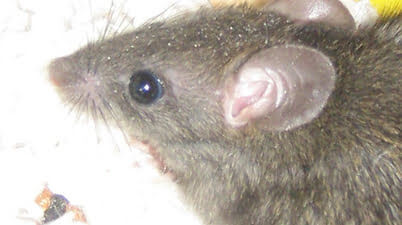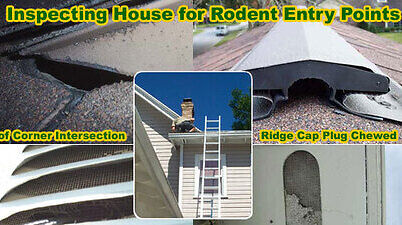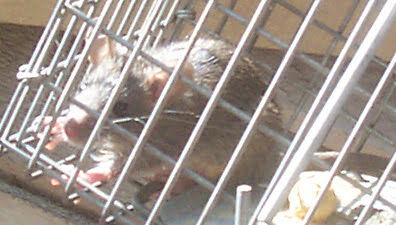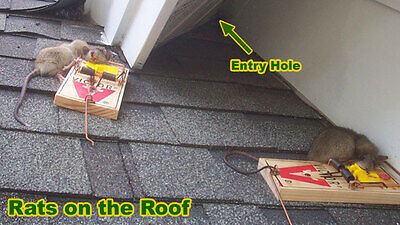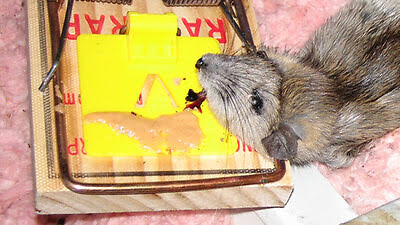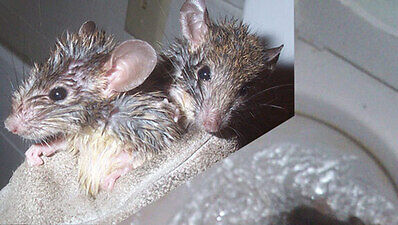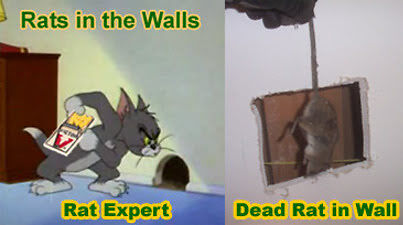What you should do with a rat after you trap it very much depends on the state of the rat, without sounding too crude. If you have caught a rat using a...
Read More
Step 1: Inspect the exterior of the house: every square inch, from ground to roof, and identify any open gaps, no matter how small. Rats, even large adults, can enter a hole as small as a quarter or a gap of just 5/8 inch. Pay special attention to all roof and soffit vents, as well as architectural gaps, siding gaps, A/C chase, pipe or electrical entry points, etc. If the building is in disrepairwith rotting wood, the situation will be difficult. If the home is elevated, anything openings on the underside of the house are entry holes. This process takes patience and a very critical eye. Read more here: Home inspection to find rat entry holes

Step 2: As you find these areas, seal them shut with metal screen and caulk, and metal flashing. You want to block all airflow, because rats can smell the difference between indoor and outdoor, and they seek out this smell to find entry holes. In addition, you must perform all repairs with steel or metal flashing that rodents are unable to chew through. Their teeth can chew through most materials, but not steel. Sealing entry holes shut is the true secret to 100% rodent elimination. Nothing else matters. If you block their access, the problem is solved permanently. If there's any openings, the rat problem will never end. Read more here: Sealing shut and repairing rat entry points

Step 3: Only AFTER the building is 100% sealed, set snap traps inside the building to trap the rats that are now stuck inside. I recommend the wooden Victor snap traps, they are the best. It is pointless to start trapping while open entry holes remain. But once sealed, the rats will be very easy to trap once blocked inside. Set traps along edges, anywhere you see the 3 signs of rats: droppings, trails/footprints, brown grease. Trap placement is crucial. Rats are creatures of habit, and they use the same trails over and over. They don't deviate from these areas. You can put peanut butter bait on the traps, but truth be told, bait is not important. Location of traps is far more relevant. I don't even use any bait.
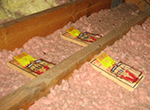
SUCCESS OR FAILURE? If you stop catching rats and you hear no more noise at night, you've done it sucessfully. If you keep hearing the noises or continue to trap rats after more than a week, that means there are still some openings that rats can use to enter and exit the buildng. You have to go back to step 1. Finding all the rat entry holes can be a great challenge on some homes. If you are unable to successfully stop the rat activity in your house, you either need to spend a very long time checking every square inch of your home's exterior, on the ground and on a ladder, or call in one of our experienced professionals.

Step 4: Clean and decontaminate the building, including the attic space and insulation. Read more here: Decontamination: Cleaning Your Attic After Rats This is for two reasons. First, rats leave behind a pheromone smell in their urine, feces, and grease, that other rats can very easily detect and follow. If your attic still smells of rat, new ones will try to chew their way in to find mates and shelter. Second, rat feces harbor various diseases that you'll want to eliminate. Read more here: Diseases and Health Risks from Rats. You'll also want to repair any damage such as chewed wires, ductwork, etc.

